Thanks to the species’ inclusion in the Finding Nemo and Finding Dory films, the blue tang is one of the most recognizable species of tropical marine fishes. It also has many figures to its name including ones by Papo, Schleich, and Mojo. Today we’re looking at the 2017 Safari Ltd.
Type: Figurine
Coho Salmon (3″ figure by Replica Toy Fish)

Here we are, the last fish release for general retail by Replica Toy Fish. Or, the last of the released fish, in truth all of the previous trout, charr, and salmon were all made available at the same time. In this instance, we have a coho salmon (or silver salmon), Oncorhynchus kisutch, another anadromous salmon species found along the coasts of both sides of the Pacific.
Clown Triggerfish (Incredible Creatures by Safari Ltd.)
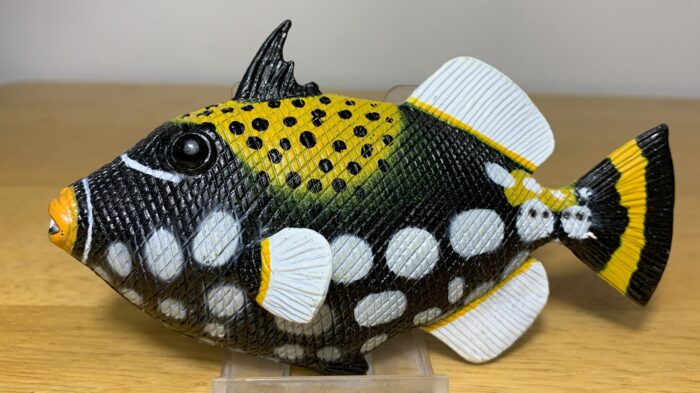
Last week we looked at the Safari Ltd. queen triggerfish, so it makes sense to look at the companies’ other triggerfish that was released alongside it, the clown triggerfish (Balistoides conspicillum). Like its companion, the clown triggerfish was produced between 2008-2016. Unlike the queen triggerfish however, this species is more popular in the toy hobby, with a TOOB figure by Safari as well as figures from Play Visions, Yujin, Colorata, and K&M.
Maine Lobster, large and small (Sea World by AAA)

AAA is well-known for casting figures from actual specimens. They have done it with snakes, turtles, lizards, frogs, mollusks, insects, and, the topic of today, crustaceans. Most of these were probably cast from specimens readily available through biological supply companies or possibly wet markets in Asia and other parts of the world.
Blobfish (Sealife by CollectA)
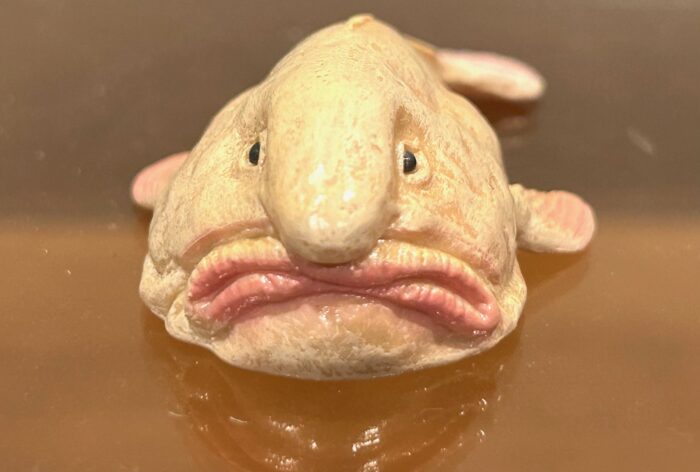
Review and images by Suspsy; edited by bmathison1972
The blobfish (Psychrolutes microporos) is a most bizarre sea creature that features loose skin with no scales, gelatinous flesh, a frail skeleton, and no swim bladder. All these adaptations enable it to survive extremely high pressures in very deep waters around Australia and New Zealand.
Chinook Salmon (3″ figure by Replica Toy Fish)

Here we are, back with another salmonid from Replica Toy Fish–but, as promised, not a trout! Or a charr for that matter. Instead, we are looking at an actual salmon figure, the Chinook salmon or king salmon, Oncorhynchus tshawytscha, released in the same wave as the rest of the previous trout and charr figures.
Queen Triggerfish (Incredible Creatures by Safari Ltd.)
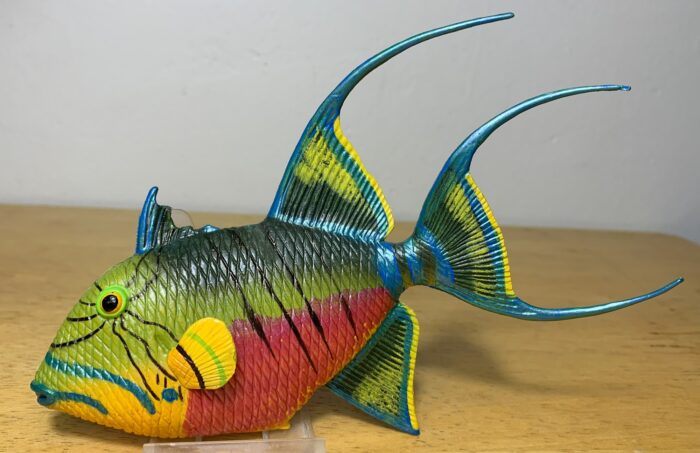
Triggerfish are a group of ray-finned fishes belonging to the Balistidae family within the Tetraodontiformes order (along with pufferfish and ocean sunfish, among others) There are 40 described species, and they all live in tropical and subtropical waters. They get their name because the second spine on their dorsal fin acts as a trigger of sorts for the first spine.
Colorado River Cutthroat Trout (3″ figure by Replica Toy Fish)
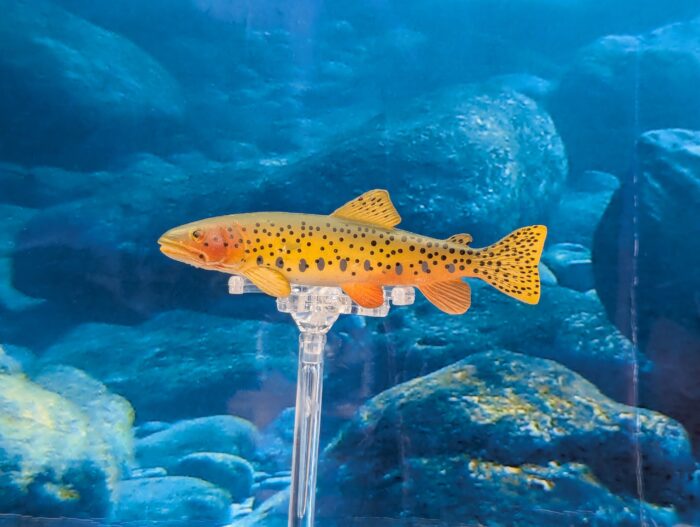
As mentioned in the last post about the greenback cutthroat trout we have one more trout from the October 2015 releases by Replica Toy Fish, and it’s another cutthroat trout variant. This one is the Colorado River Oncorhynchus virginalis pleuriticus another of the Rocky Mountain cutthroats “Uniquely Identifiable Evolutionary Units” (UIEU).
Greenback Cutthroat Trout (3″ figure by Replica Toy Fish)
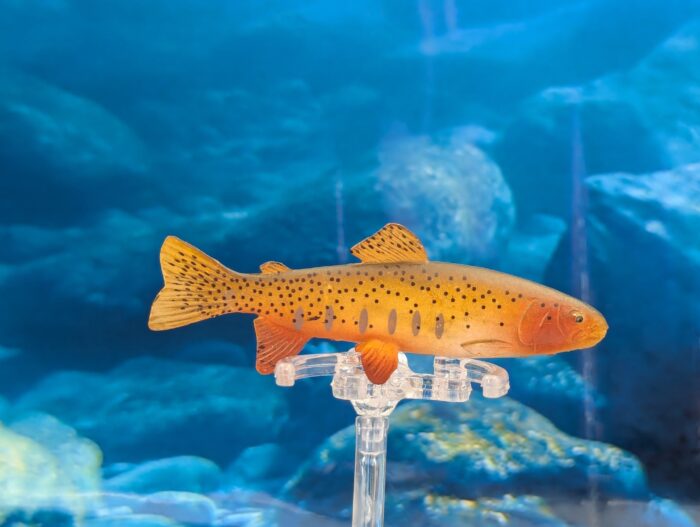
And now another trout from the October 2015 releases by Replica Toy Fish. It hadn’t occurred to me until now, but it turns out that all of the salmonid species so far have been from the Pacific side of the salmonid family–except the the brown trout and the two versions of the brook trout (so far…foreshadow!) This has included the coastal rainbow and Little Kern golden trout, and now we are adding a congener, one of the many ‘subspecies’ of cutthroat trout, the greenback cutthroat trout Oncorhynchus virginalis stomias.
Marine Iguana (Incredible Creatures by Safari Ltd.)
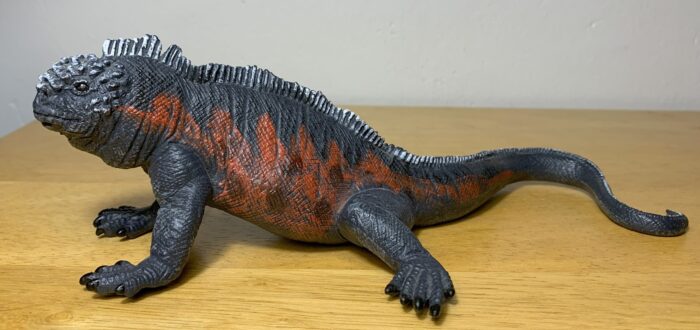
A large lizard, with spikes along its back, that dwells in the Pacific Ocean. No, I’m not talking about Godzilla, I’m talking about the marine iguana (Amblyrhynchus cristatus), the world’s only marine lizard. It’s about as close to a real Godzilla as you can get. In fact, one of its many subspecies is named A.
Mongolian Stallion (Horse Country by CollectA)

As always, I must thank Happy Hen Toys for their sample offer for this review! The Mongolian horse derives its name from its country of origin and it enjoys a long and successful history in the region. This fame at one time stretched all the way from Japan to Western Europe as it aligned with the conquest of the famed Genghis Khan.
Konik Mare (Horse Country by CollectA)

I would like to kindly thank Happy Hen Toys for providing this wonderful sample model for review! The Polish Konik horse is a breed with very murky origins and lots of myths surrounding it. The animals certainly descend from very sturdy, stocky, and hardy animals from Central Europe and they may have hybridized with various domestic equines over the years.




